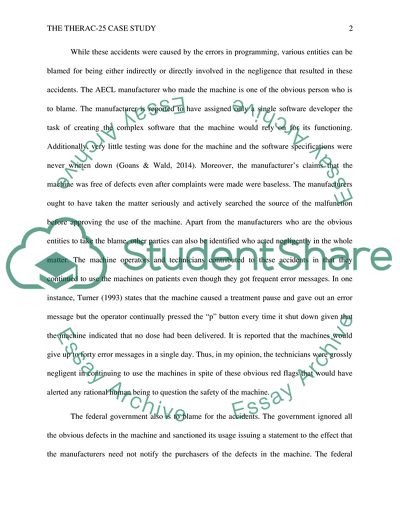Cite this document
(The Therac-25 Accidents Case Study Example | Topics and Well Written Essays - 1250 words, n.d.)
The Therac-25 Accidents Case Study Example | Topics and Well Written Essays - 1250 words. https://studentshare.org/physics/1879036-case-study-the-therac-25
The Therac-25 Accidents Case Study Example | Topics and Well Written Essays - 1250 words. https://studentshare.org/physics/1879036-case-study-the-therac-25
(The Therac-25 Accidents Case Study Example | Topics and Well Written Essays - 1250 Words)
The Therac-25 Accidents Case Study Example | Topics and Well Written Essays - 1250 Words. https://studentshare.org/physics/1879036-case-study-the-therac-25.
The Therac-25 Accidents Case Study Example | Topics and Well Written Essays - 1250 Words. https://studentshare.org/physics/1879036-case-study-the-therac-25.
“The Therac-25 Accidents Case Study Example | Topics and Well Written Essays - 1250 Words”. https://studentshare.org/physics/1879036-case-study-the-therac-25.


